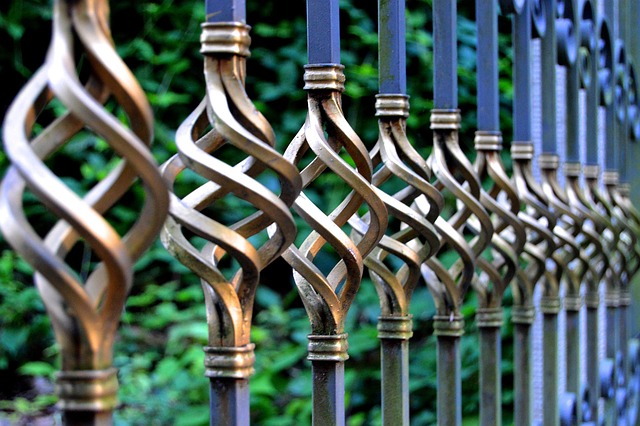In New Bedford, MA, the shift towards eco-friendly fencing materials is gaining momentum, driven by a growing awareness of environmental stewardship. This trend offers not just aesthetically pleasing alternatives to conventional fences but also significant ecological benefits. From natural materials like bamboo and wood to sustainable innovations such as recycled plastics and metals, these options contribute to healthier local ecosystems and support wildlife habitats. Furthermore, eco-friendly fencing boasts longevity and low maintenance features, making it a compelling choice for homeowners and community developers alike.
- The Rise of Eco-Friendly Fencing in New Bedford
- Natural Materials: Bamboo and Wooden Options
- Sustainable Innovations: Recycled Plastics and Metals
- Benefits for Local Ecosystems and Wildlife
- Longevity and Low Maintenance Advantages
- Community Engagement and Future Trends
The Rise of Eco-Friendly Fencing in New Bedford
In recent years, there’s been a noticeable shift towards eco-friendly fencing options in New Bedford, MA, reflecting a growing environmental consciousness among residents and contractors alike. This trend isn’t just about aesthetics; it’s driven by a desire to minimize the ecological footprint of outdoor structures. The traditional wooden fence, long a staple in many neighborhoods, is being challenged by innovative alternatives made from sustainable materials.
New Bedford’s embrace of eco-friendly fencing is part of a broader movement across the country. As consumers and builders become more aware of environmental impacts, they’re seeking solutions that offer both functionality and a reduced carbon footprint. Fortunately, modern fencing technologies now provide just that—durable, low-maintenance barriers crafted from recycled plastic, bamboo, and other renewable resources. This shift not only benefits the environment but also enhances the overall look and value of properties in New Bedford.
Natural Materials: Bamboo and Wooden Options
In the realm of eco-friendly fencing, natural materials like bamboo and wood stand out as sustainable alternatives to traditional synthetic barriers. Bamboo, a rapidly renewable resource, is known for its strength and versatility. This grass-like plant can grow quickly, making it an abundant and readily available option for fencing. Its natural beauty adds a distinctive aesthetic to any outdoor space, seamlessly blending with the surrounding environment in New Bedford, MA.
Wooden options, particularly those certified by sustainable forestry programs, offer another excellent choice. Local hardwoods such as cedar and spruce are durable and naturally resistant to rot and pests. These materials not only reduce environmental impact but also provide a timeless, classic look that enhances property value. Moreover, wooden fences can be customized with natural finishes or stains, allowing homeowners to create unique, personalized designs while staying eco-conscious.
Sustainable Innovations: Recycled Plastics and Metals
In recent years, sustainable innovations in fencing materials have emerged as a game-changer in New Bedford’s effort to embrace eco-friendly practices. One prominent development is the use of recycled plastics and metals, transforming waste into robust and durable fencing solutions. These materials offer a unique blend of environmental friendliness and strength, addressing two key aspects of sustainable living.
Recycled plastics, often derived from post-consumer waste, are molded and shaped to create sturdy fence posts and panels. Similarly, metals like recycled aluminum and steel find new life as elegant and long-lasting fencing options. This innovative approach not only reduces the demand for virgin resources but also minimizes waste that might otherwise end up in landfills, contributing to a cleaner, greener New Bedford.
Benefits for Local Ecosystems and Wildlife
Eco-friendly fencing materials offer numerous benefits to local ecosystems and wildlife, enhancing the overall health and balance of New Bedford’s natural surroundings. Traditional fences often pose risks by impeding wildlife movement and damaging habitats, but sustainable alternatives provide a more harmonious solution. These materials are designed to minimize ecological impact while still providing effective barriers, ensuring animals can move freely across landscapes.
By choosing eco-friendly fencing, residents contribute to the preservation of diverse species’ habitats. Such fences integrate seamlessly with natural environments, reducing visual pollution and promoting biodiversity. They offer safe passage for small mammals, birds, and insects, fostering a thriving ecosystem within the city limits. This approach encourages wildlife to flourish, creates interconnecting habitats, and ultimately strengthens New Bedford’s ecological resilience.
Longevity and Low Maintenance Advantages
Eco-friendly fencing materials offer significant advantages when it comes to longevity and low maintenance, making them an attractive option for homeowners in New Bedford, MA. Unlike traditional fences that may require frequent repairs or replacements, these sustainable alternatives are built to last. They are often constructed from durable, weather-resistant materials such as recycled plastic, wood composites, or natural fibers, ensuring they can withstand harsh weather conditions without fading, warping, or splitting.
The low-maintenance nature of eco-friendly fences is another significant benefit. Unlike wooden fences that demand regular painting, sealing, and cleaning to prevent rot and pest damage, these materials require minimal upkeep. Most only need an occasional wash with soapy water to keep them looking their best, saving homeowners time and money on maintenance costs. This reduced upkeep also contributes to the overall sustainability of these fencing options, as less energy and resources are expended on their care.
Community Engagement and Future Trends
New Bedford, MA, is witnessing a growing trend of community engagement when it comes to eco-friendly fencing materials. Local residents and businesses are actively participating in initiatives aimed at promoting sustainability and reducing environmental impact. This shift is not only beneficial for the local ecosystem but also fosters a stronger sense of community. School programs, neighborhood workshops, and collaborative projects with city authorities are all contributing to raising awareness about green alternatives to traditional fencing.
Looking ahead, future trends suggest that this movement will gain momentum. Innovations in sustainable materials, such as recycled plastics, bamboo, and plant-based composites, are expected to offer even more options for eco-conscious homeowners and businesses. Additionally, advancements in technology could lead to the development of smart fencing systems that enhance security while maintaining environmental harmony. As New Bedford continues to embrace these changes, it sets an example for other communities, potentially inspiring widespread adoption of eco-friendly practices in fencing and beyond.
